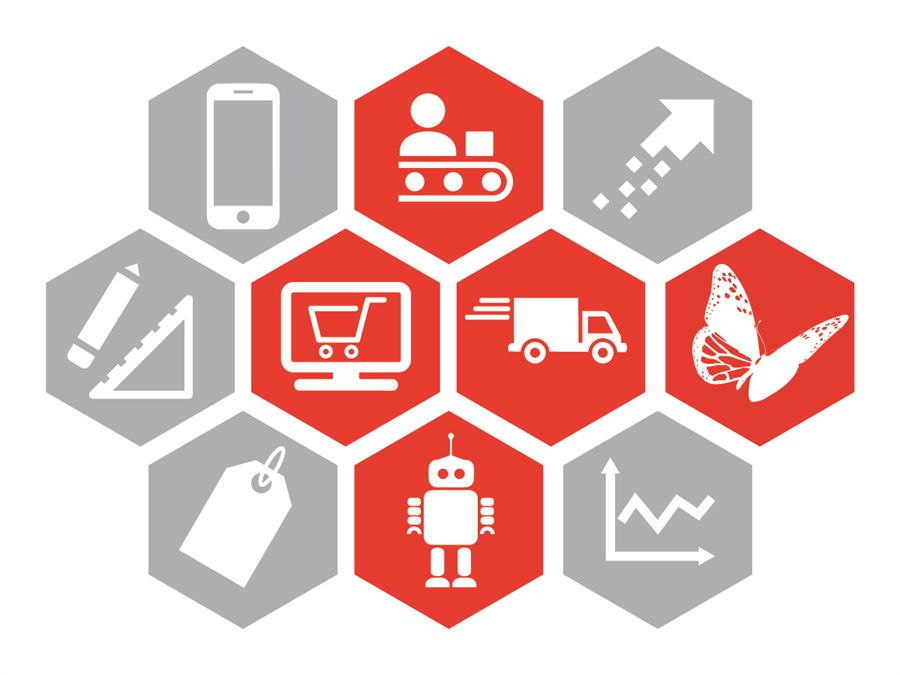Published October 8, 2019
When Tompkins International designed our ecosystem model for the enterprise, we identified four key elements that apply to all our service lines and solutions. These are Strategy, Commerce, Logistics and Technology. The article on Commerce has been developed and is available on our website here and similar ones on Logistics and Technology are in process.
This article discusses Strategy and its applications in the Tompkins ecosystem – our capabilities and competencies, services, products, solutions, and service lines.
STRATEGY IN TODAY’S BUSINESS WORLD
Business models die. Brands do not! When companies continually realign their businesses to the brands, they most often prosper and excel.
In recent years, strategy – in particular strategic planning – has been maligned as being “old school” and unable to set goals that synch with the fast pace of business in the digital world. We agree with these criticisms when strategy is viewed in its traditional factors of planning and use in annual budgeting.
At the same time, we cannot ignore the formulation and use of strategic principles to guide operations and drive execution. Sound business and operations strategies are needed to enable the vision, determine and refine corporate goals and set priorities.
Digitalization is the concept impacting the entire end-to-end supply chain today. In fact, integrating technology into the business model is more than just important – it is imperative for profitable business growth and, for some, survival.
The new world of e-commerce, digitalization and rapidly evolving disruptions – driven by customer demands – has altered strategies everywhere. Today’s fast-changing environment requires strategies to address key imperatives that depend on new processes, technologies and metrics. The overall metrics of TIME, COST and QUALITY are of primary importance, but setting ‘measures that matter’ under these metrics needs to align with new business models that lead strategic initiatives to achieve the goals.
STRATEGY WITHIN OUR ECOSYSTEM
Each supply chain process, technology, service line, product or solution requires a strategy. The normal questions of “what, why, where and when?” apply to each. These strategies are operational, providing the linkage between strategy and execution. For example, inventory strategy in our ecosystem has been redefined to align with distributed logistics, the operational strategy that forms the basis of our ‘Fulfillment as a Service’ (FaaS). Our FaaS enables customer success in digital commerce. Allocating inventory to fulfillment centers closer to customers enables us to provide rapid deliveries and high-quality service at affordable costs.
There are four priority questions for developing strategies in the Tompkins International ecosystem:
- How do we design and provide solutions and services that ensure customer success?
- Why do we need to and how do we successfully integrate digitalization into the overall business?
- What are our competitive advantages with providing:
- “Sell everywhere with smarter logistics”
- Superior consulting and optimal warehouse operations
- Agile automation
- How do we integrate leading practices and technologies into the complete end-to-end supply chains – from strategy to delivery?
Developing strategies in the new e-commerce world requires a very different mindset, yet the methods employed are often quite similar. The predominant difference has to do with the speed of disruption and change. The lack of certainty about the future is the very reason every business needs a strategy.
Uncertainty stems from many factors we cannot control – the economy, geopolitical events and competitors’ actions, to name a few. All too often, companies only prepare for one version of the future, without understanding the likelihood of that version becoming reality.
Additionally, many companies often view strategy as a purely intellectual exercise, or rather, an annual budgeting method. Notwithstanding the fact that the annual budget “needs a strategy,” strategic planning in this scenario is based on three factors: (1) what we have to start with; (2) estimates of trends and the future; and (3) selected initiatives. Goals are then set for operations to aim to achieve.
Unfortunately, not only is this strategy static and resistant to change, its chances of success are most often not predicted. This strategy is driven by risks and assumptions, not real-world changes, disruptions and customer behavior.
The critical point to remember is that e-commerce strategies need to be developed or refined faster and more frequently; there is more risk in terms of competitive actions and disruptions and the probability of success is variable.
Strategies in the e-commerce world cannot be developed as if we know the future, they must be flexible enough to adapt to industry changes by disruptions, trends and innovations. Traditional strategic planning conducted as an annual event, with a resulting fixed budget, is obsolete.
Strategy today is a process that serves as the starting point for commerce, logistics and technology. The process works to resolve strategic choices and set measurable goals. The new world of digital commerce demands agility, innovation and adaptability on an ongoing basis to ensure business longevity and profitable growth.



